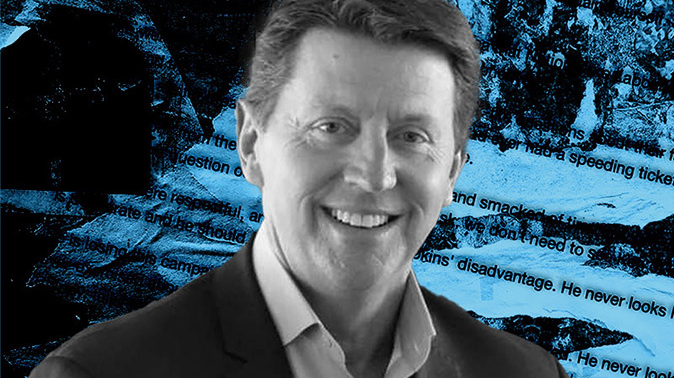I’ve always wanted to return to Milan. It is a truly specular city, and after Rome, is Italy’s finest. So when the opportunity came to go back during fashion week, it didn’t take much to convince me.
Milan is a busy city at any time. But during fashion week the whole town is creaking at the seams.
Events are critical for any city, particularly those who’s officials are seeking to establish some form of brand position. In much the same way as we promote Auckland as ‘the city of sails’, Milan is all about fashion.
The thing about events is that they attract people. Those people spend money. Events that repeat are better. Events that last for a longer period of time are better too. The more often we can attract people, and the longer they stay, the better.
Fashion week is Milan’s biggest event. And fashion week is more than just a pretty face. The impact on the city is enormous. Standing in the middle of the square between the city’s fabulous Duomo and the adjacent, and equally spectacular, Galleria, I joked that for every fashion model in town there must be a thousand ‘extras’.
You see, when we think about fashion week, we probably think about designers, models, and the garments they respectively prepare and wear along the catwalk.
What we seldom think about is the number of people behind the scenes. Behind every outfit there are make-up artists, hairdressers, and stylists. Dressmakers and machinists make last minute adjustments. Every fashion show has a Director, choreographer, lighting specialists and sound people. Sometimes there’ll be DJ or a band. And capturing it all will be the photographers, videographers and in some cases full on television production crews. The models are variously accompanied by mothers, friends, chaperones or a combination of all three. Plenty of those on duty have a personal assistant nearby, and of course they are all moved around to where they need to be by drivers who’s job it is to navigate the cluttered streets, with their cobblestone roads, piloting everything from Rolls Royces and Bentleys, to the more humble Uber or taxi.
We might imagine a harem of overdressed fashionistas tottering around on ridiculously high shoes. But, for the most part, the majority of those present are like any other behind the scenes textile worker, looking tired, stressed and overcome by the activity around them. Come the end of the day, a drink and a meal seems to take priority over a shower and a change of clothes.
To the outside observer, fashion week is all about fashion. But to the city itself, fashion week has a much greater purpose. It’s about the people. Tens of thousands of them. All of whom need to be accommodated, and when they’re not working, all of whom need to eat, drink, party, and in some cases shop.
Cities need events like this. And one of the things that strikes me about Auckland, is that we don’t anything remotely like it. Sure, we have the odd one off. A Rugby World Cup in 2011 and Women’s Rugby and Soccer World Cups in the last year. They bring people, but they’re one offs. They don’t happen regularly enough.
And our cities from Auckland to Queenstown have teams of people hustling for business to fill our conference centres. But again, they’re one offs. We might attract an international technology conference or an annual meeting of bankers or university professors, but next year they’ll be in Melbourne or the Gold Coast. One offs.
Big events, held annually, end up supporting the infrastructure it takes to support them. They become a part of the fabric, the branding and the funding of the city. They bring big dollars over and over again. They attract wealthy people and the thousands they employ to keep their businesses churning along.
As I watched Milan fashion week unfolding around me I realised that we had something similar once. An event that repeats, perhaps not annually, but when it does come to town it stays for months. Like fashion week, our event actually underwrote the business community that served it, and the more we hosted it, the better we became at it.
But despite doing everything we needed to retain the opportunity, the home team sold us out to the highest bidder. And so next year, New Zealand will be defending the America’s Cup in Barcelona. It’s still a disgrace. You can argue about the money all you like, but the America’s Cup, and the lead up events that surround it, should be seen as an opportunity to support and grow our highly competent marine sector. This time the combination of government, Team New Zealand and the New Zealand Yacht Squadron have let us down.
And yet, next year we’ll be huddled around our TV screens cheering “our team” on. For what, to have them take the ultimate prize away, again?
You see the prize is not the trophy. Governments and cities don’t pour money into events in the hope of a trophy. It’s all about the dollars. And as we’re seeing with fashion week in Milan, the dollars are enormous. Hosting an America’s Cup should be delivering similarly for us, but it’s a bit like when our kiwi fruit recipe was sold to the South Americans. We just keep killing the golden goose.
So what’s next. What industry do we have where we can attract the world to come and support us? We’re not big enough for fashion. Yachting was perfect because we’re good at it and we have an industry that can cope with and benefit from the big numbers that come with the right event. But we’ve given that away.
So we need something else now. What’s out there that we can make our own.
This article was first published on Newstalk ZB Plus.

Recent Comments